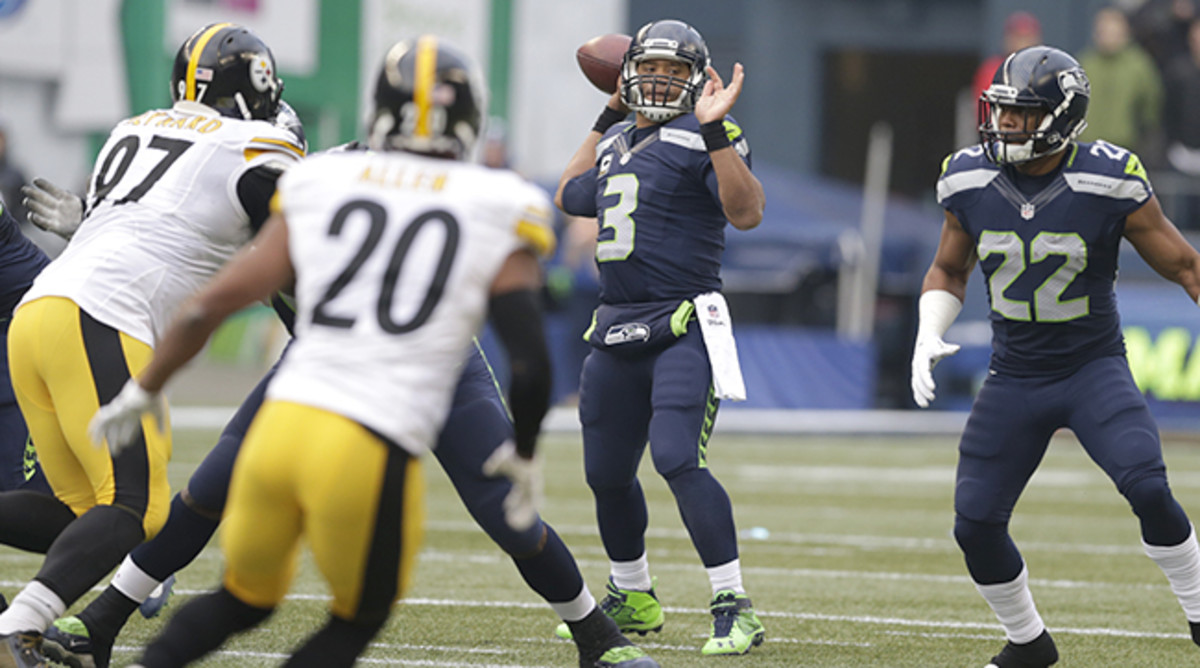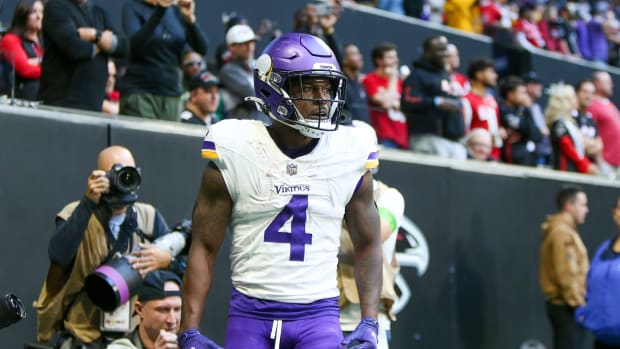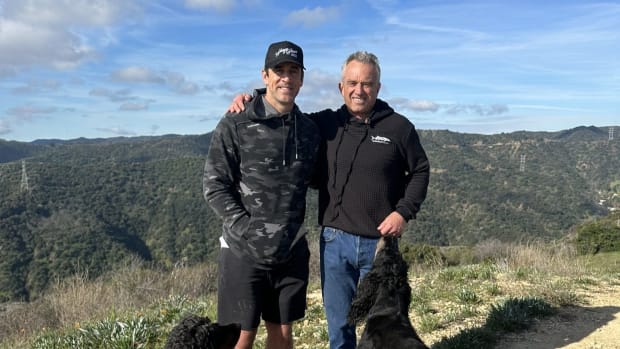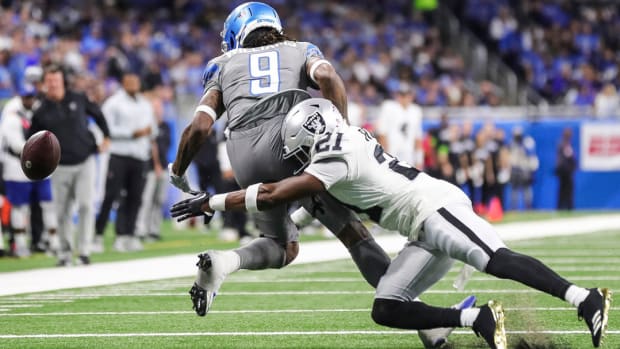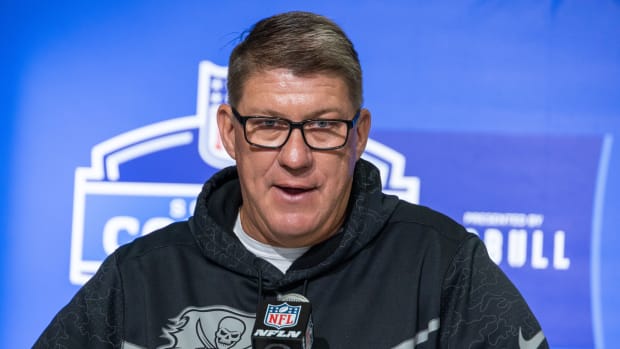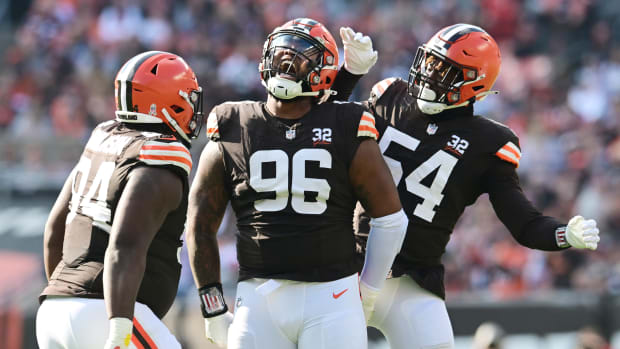How Russell Wilson Tore Apart the Steelers
Whenever a good team loses, the word “blueprint” gets thrown around. As in: The blueprint is now out on how to beat these guys. Often this is just jargon. But sometimes it’s legitimate.
Sunday afternoon in Seattle was one of those times it was legitimate. The Seahawks pasted an aggressive Steelers defense for 436 yards and 39 points. Russell Wilson threw for 345 yards and a career-high five touchdowns. But Seattle did not lay out the blueprint for beating the Steelers; they just followed the one the Raiders set three weeks ago when they put up 35 (in a three-point loss) at Pittsburgh.
In that game, the Raiders had a lot of shrewd route combinations that out-leveraged Pittsburgh’s base coverages. Many of those routes came out of spread formations. That’s what Seattle mimicked. The Steelers are built on blitzes and zone coverage—an unusual combination that has always made them difficult to play against. (Most blitzes come with man coverage.) When you spread out against a blitz-oriented zone defense, the blitzers and zone defenders must spread with you. That creates more ground for the blitzers to cover, nullifying pressure disguises and giving an offensive line and quarterback room to identify rushers, both before and after the snap. The spread also forces the zone defenders to operate on an island, essentially converting their coverage into a bastardized man-to-man.
Many teams play zone because they don’t have a talented enough secondary to play man. The Steelers would fall in this category except that in Dick LeBeau’s philosophy (which first-year defensive coordinator Keith Butler has continued), they’re a zone-based defense regardless of personnel. More specifically, they’re a single-high zone-based defense, meaning they play with just one deep safety.
In single-high zone (aka Cover 3), the safety patrols centerfield and the two outside cornerbacks defend the furthest outside vertical routes (regardless whether those routes are run by a wide receiver, tight end or running back). The remaining pass defenders—mostly linebackers and safeties—sit in zones underneath.
• BRONCOS REBORN, PATRIOTS’ PERFECTION ENDS: Peter King’s Week 12 Monday Morning Quarterback column
Against this formula, if an offense spreads out and puts a wide receiver inside, that wide receiver will not only get matched against one of those linebackers or safeties, but thanks to the spread, he’ll get matched against that linebacker or safety on an island. This is a risk the Steelers have always lived with. But what happened against Oakland, and even more so against Seattle, was that the offense exacerbated these mismatches with designer route combinations that also put island defenders in a bind. Zone defenders get caught in binds all the time, but generally there are other zone defenders near them to diminish the damage. That’s not always the case if everything is spread out. In the simplest form on Sunday, there were many instances when the Seahawks had two routes attacking one defender and his oversized area of responsibility. This was especially prevalent down the seams.
So this is the blueprint for beating the Steelers. The bigger question, though, is whether the Seahawks will make it their own blueprint for beating future opponents. We know it can work for their offense in practice; Seattle’s 4-3 defense, though different from Pittsburgh’s 3-4, also features single-high zone coverage. And though the Seahawks’ defense, being faster and more talented than the Steelers’, is less vulnerable to zone-beater mismatches, this season it has been exposed here more than ever. That remained true on Sunday.
If it continues to be true, then Wilson and the offense will have to keep posting big numbers. Spreading out could be a way to do that, for three reasons:
1. Most spreads involve all five eligible receivers running patterns, leaving just five blockers in protection. This usually means the ball has to come out quickly, and on defined reads. Wilson could use this sort of coerced structure. Though a great playmaker, he leaves too many throws on the field by breaking down in clean pockets and going into sandlot mode. But in the second quarter alone on Sunday, Wilson had the following completions out of spread sets, all of which came on time and within the play’s design: Tyler Lockett 11 yards on third-and-10; Doug Baldwin 16-yard TD on third-and-goal; Jimmy Graham 18 yards on third-and-10; Jermaine Kearse 22 yards on third-and-16; Kevin Smith 21 yards on the next play, followed immediately by a Jermaine Kearse 12-yard touchdown.

The Seahawks were dealt another blow when Jimmy Graham went down with a season-ending knee injury during the fourth quarter.
Ted S. Warren/AP
2. Though Wilson could stand to be more disciplined in the dropback game, you obviously don’t want to eliminate his sandlot inclinations. Those sandlot plays have more teeth from a spread because wherever Wilson runs, he’ll have a receiver in that vicinity. And in this case, it doesn’t matter what coverage the defense is in because Wilson’s movement inherently breaks it down.
3. It wasn’t necessarily the case against Pittsburgh, but the Seahawks are at their best when they’re taking a run-first approach. This remains true even with Marshawn Lynch shelved and undrafted rookie Thomas Rawls, a violent runner in the mold of a poor man’s Adrian Peterson (a high compliment), serving as the featured back. Running plays tend to occur out of heavy, condensed formations, but they’re arguably even more effective from spreads because there are fewer defenders in the box. This is especially true for a team that can run the read-option like Seattle.
By the way, another example of the Seahawks spreading out was on Luke Willson’s 12-yard catch immediately following Jimmy Graham’s season-ending knee injury. Not to be callous—a significant injury is heartbreaking, especially with a great talent like Graham—but Willson’s catch offered a perfect illustration of how this offense really won’t change in Graham’s absence.
When the Seahawks have success via play design, it’s on plays like Willson’s catch, where the formation defines the quarterback’s read and creates a glaring mismatch or, more often, exploits a zone’s void. Graham is a better player than Willson, but on defined reads like this, the difference between the two tight ends is often negligible. An uncovered Willson is the same as an uncovered Graham.
This logic also applies to Seattle’s sandlot plays. In theory, Graham should be great here because he’s big, athletic and therefore dangerous on jump balls. But with Russell Wilson’s play-extending scrambles, you rarely see jump balls. With as much ground as Wilson covers, defenders fall off and receivers get wide open. If you’re a Seahawks receiver, more important than being able to win on jump balls is being able to feel your way around when the play breaks down. Graham, who has spent his career in Sean Payton’s and Drew Brees’s highly structured system in New Orleans, never got entirely comfortable in this capacity.
Though Graham was starting to click more in Seattle’s system (including as a run-blocker), he never became a central figure in it. The Seahawks did not constantly move him all over the formation to create mismatches. They treated him as just another cog in the machine.
And the machine looked well-oiled on Sunday. Even with its most talented receiving weapon now joining the franchise running back on the sideline, Seattle has a chance to keep rolling. It just needs a continued influx of spread concepts.
































